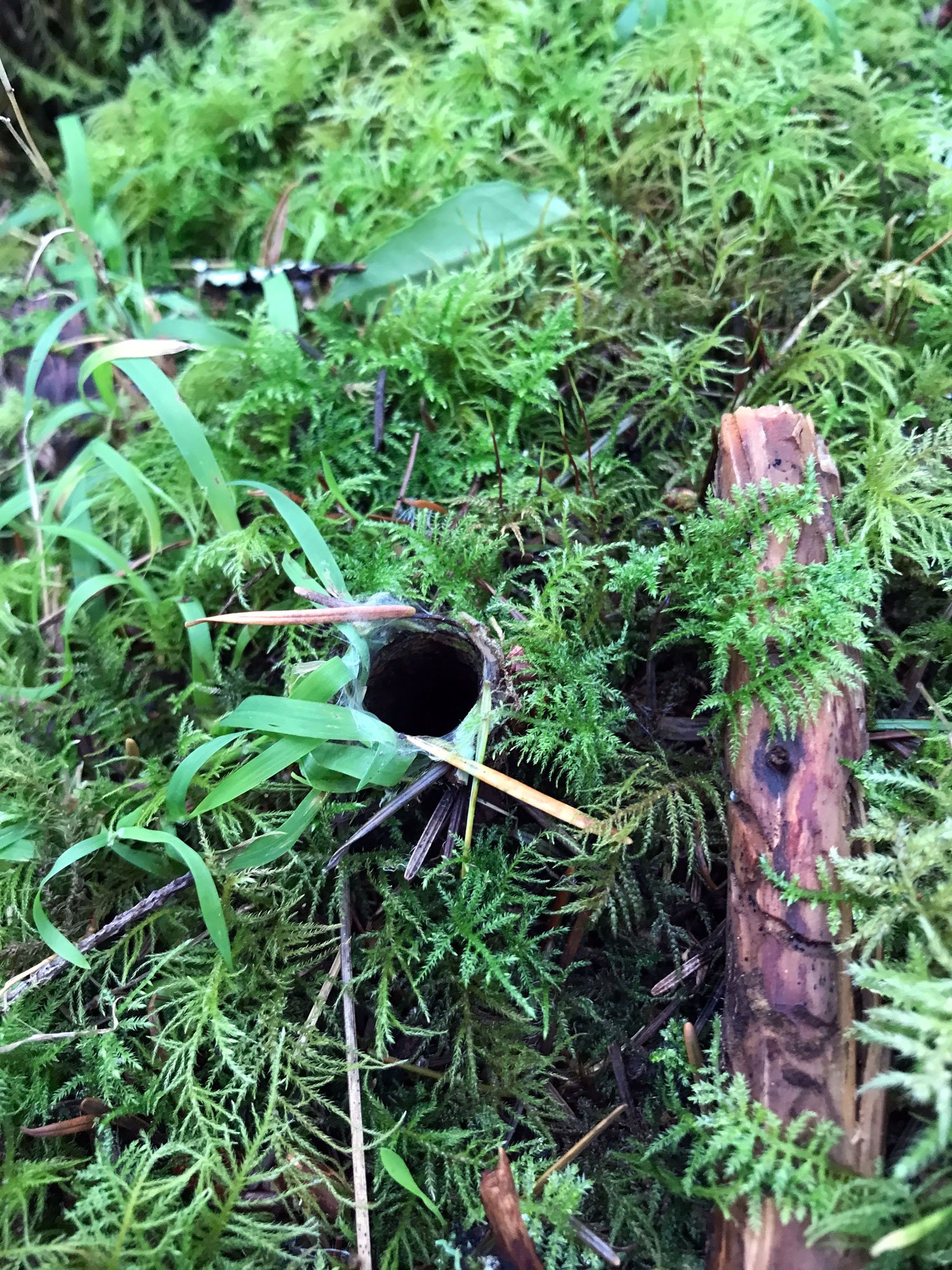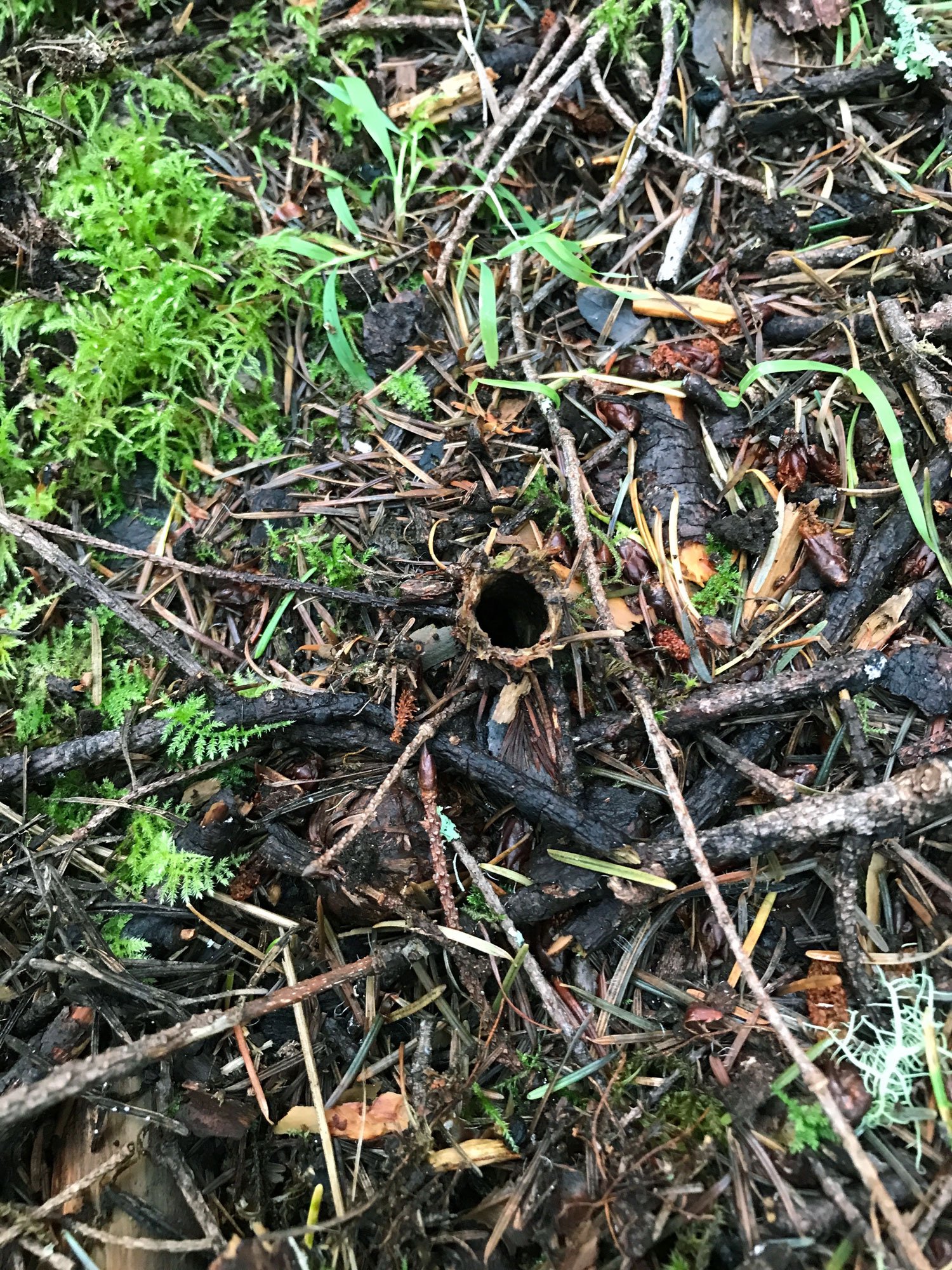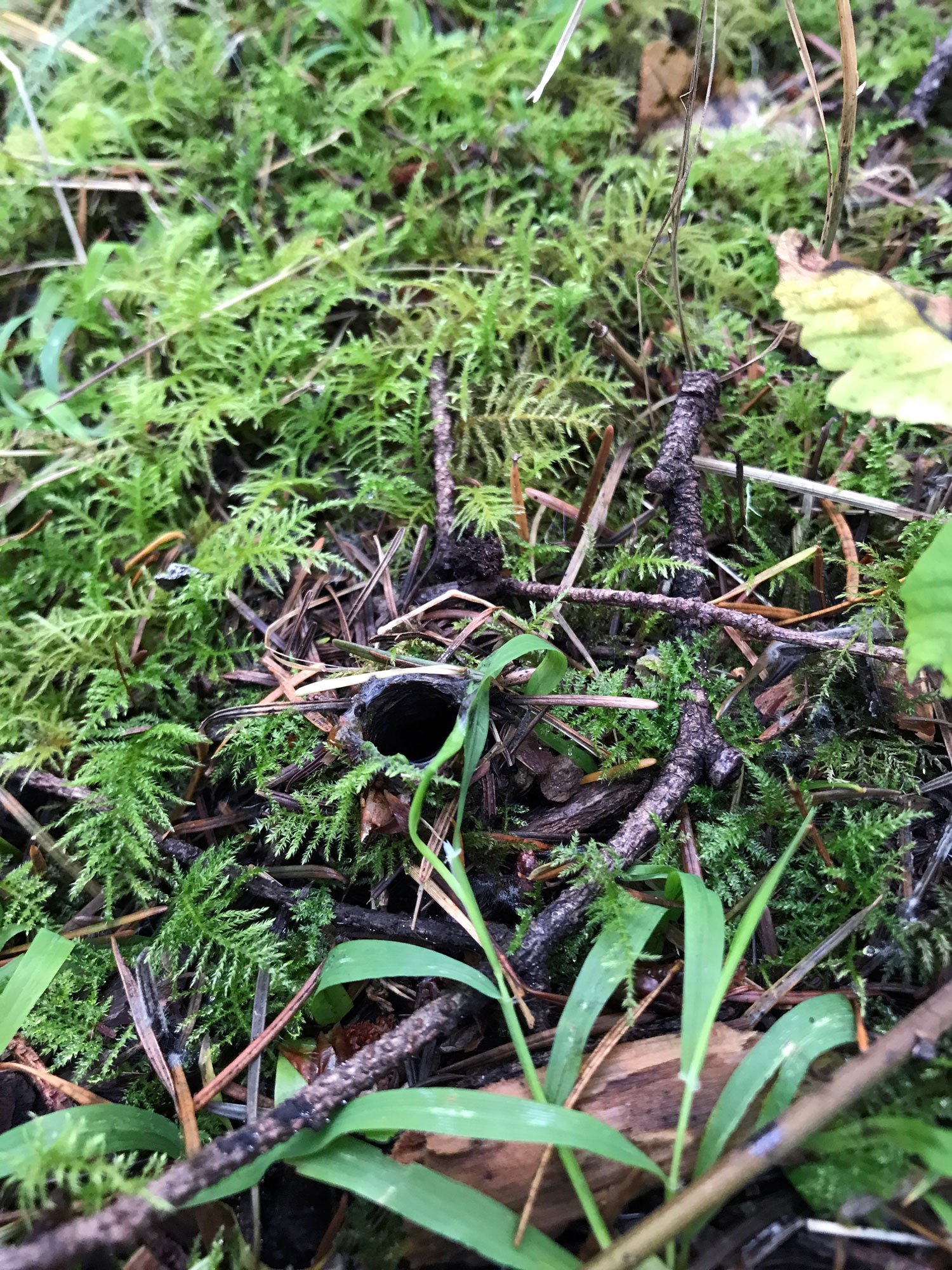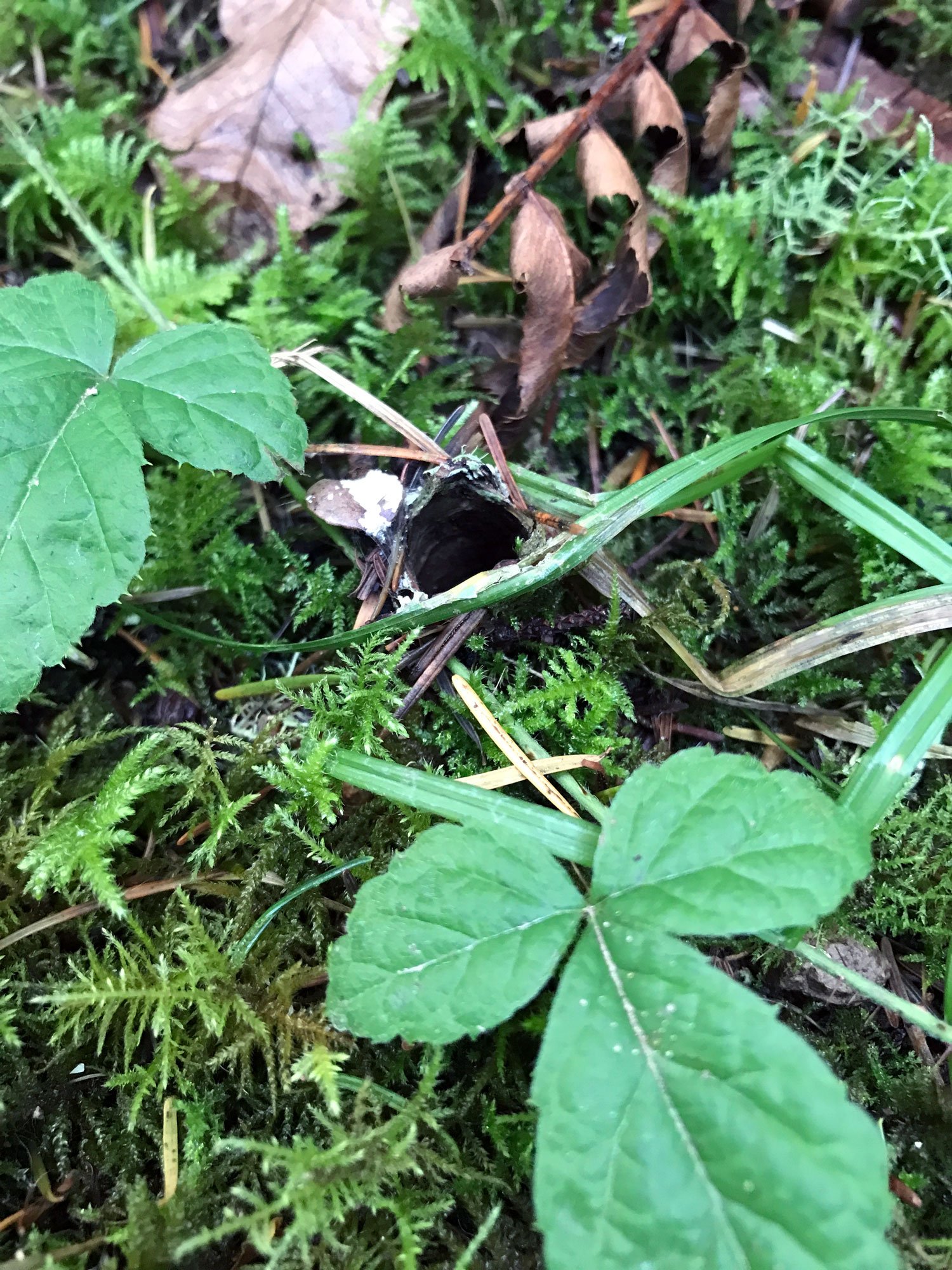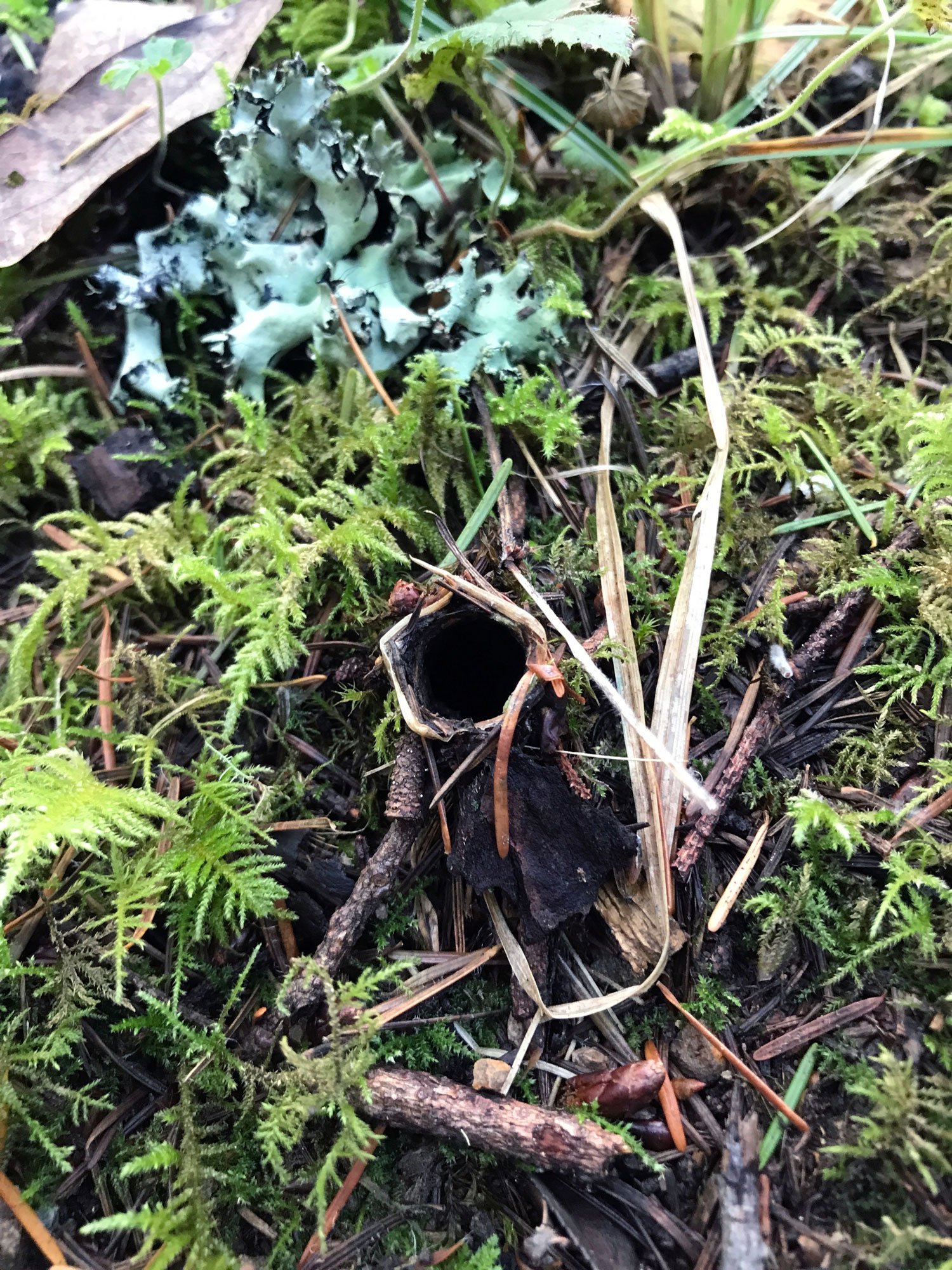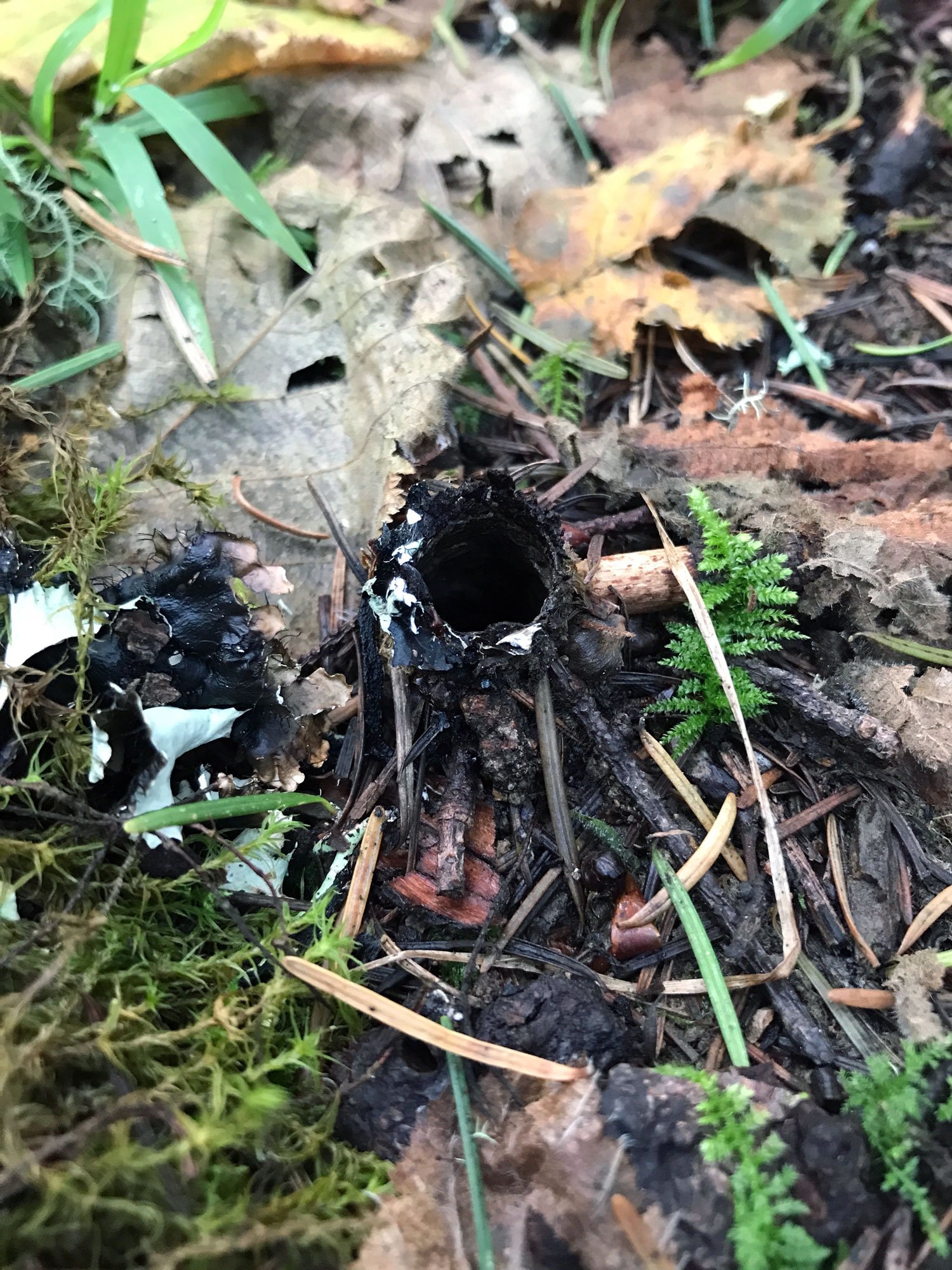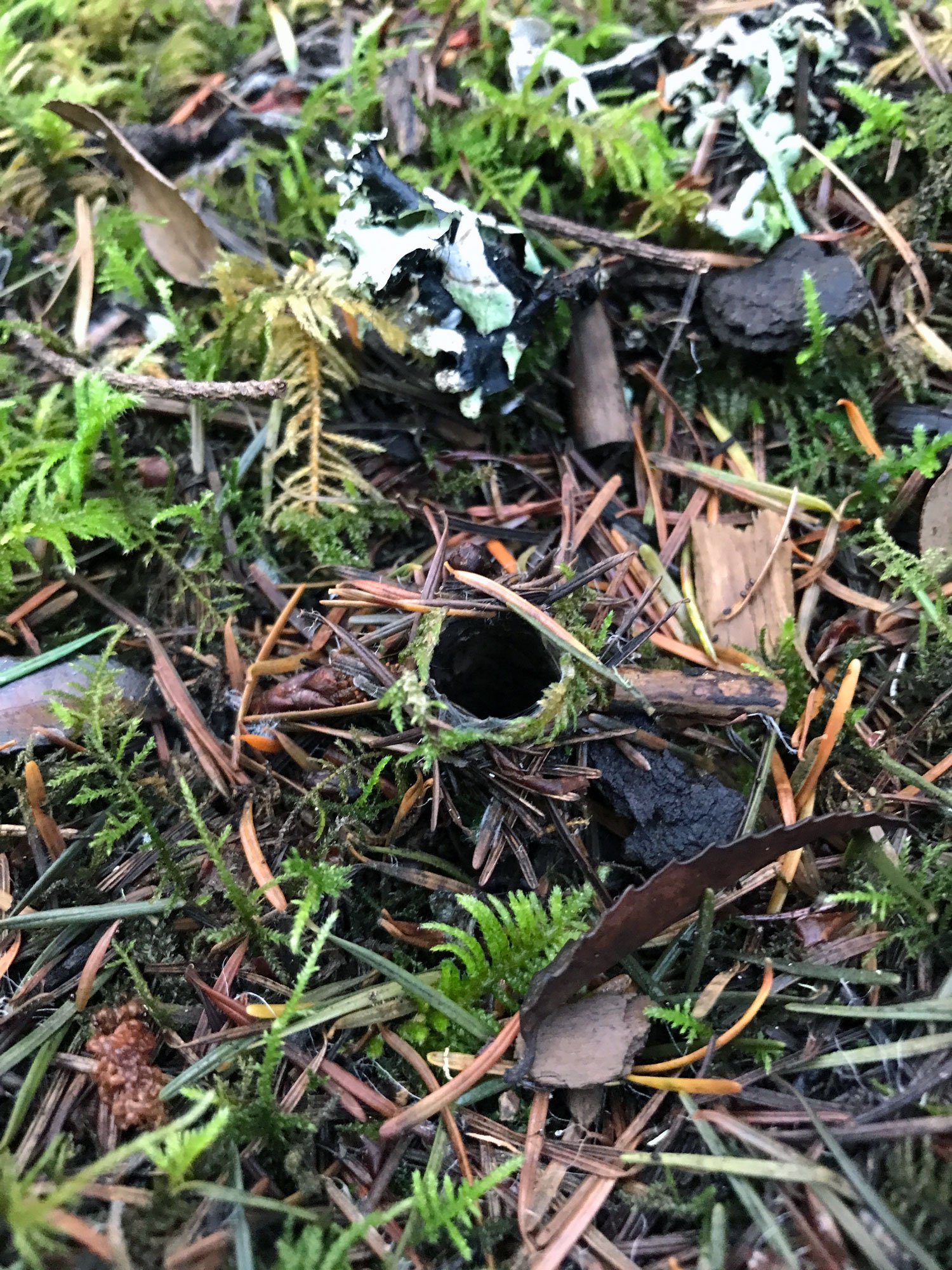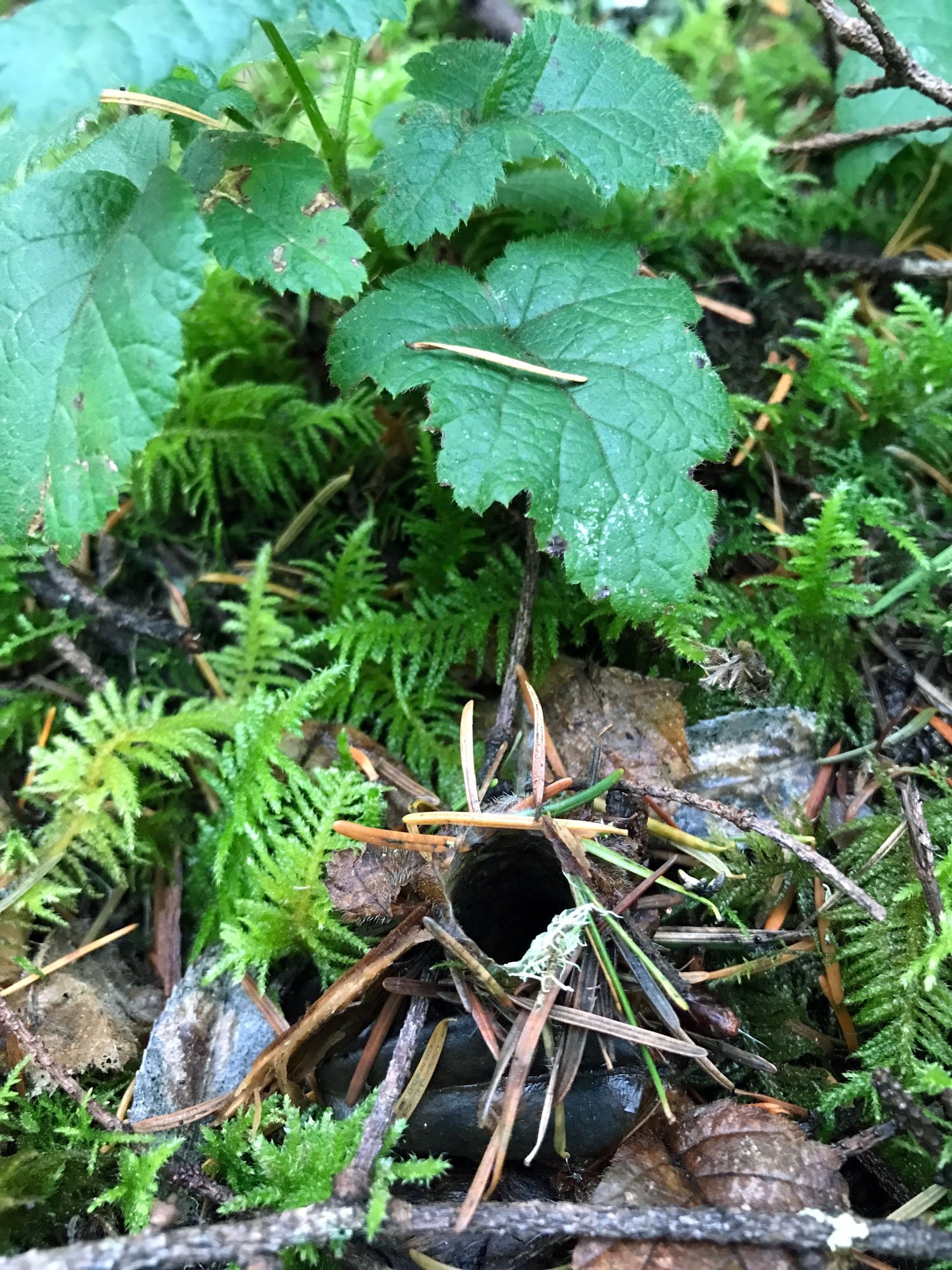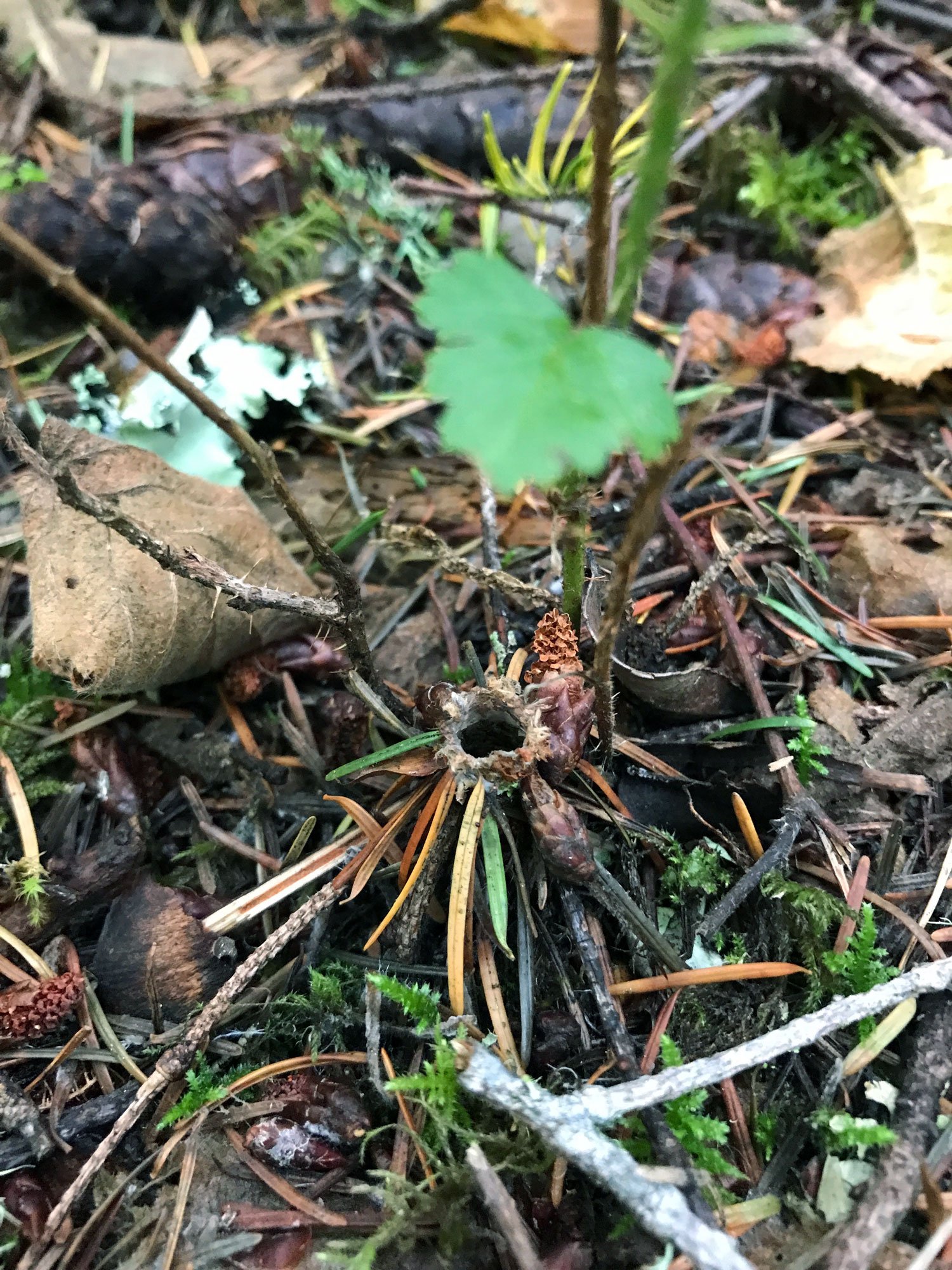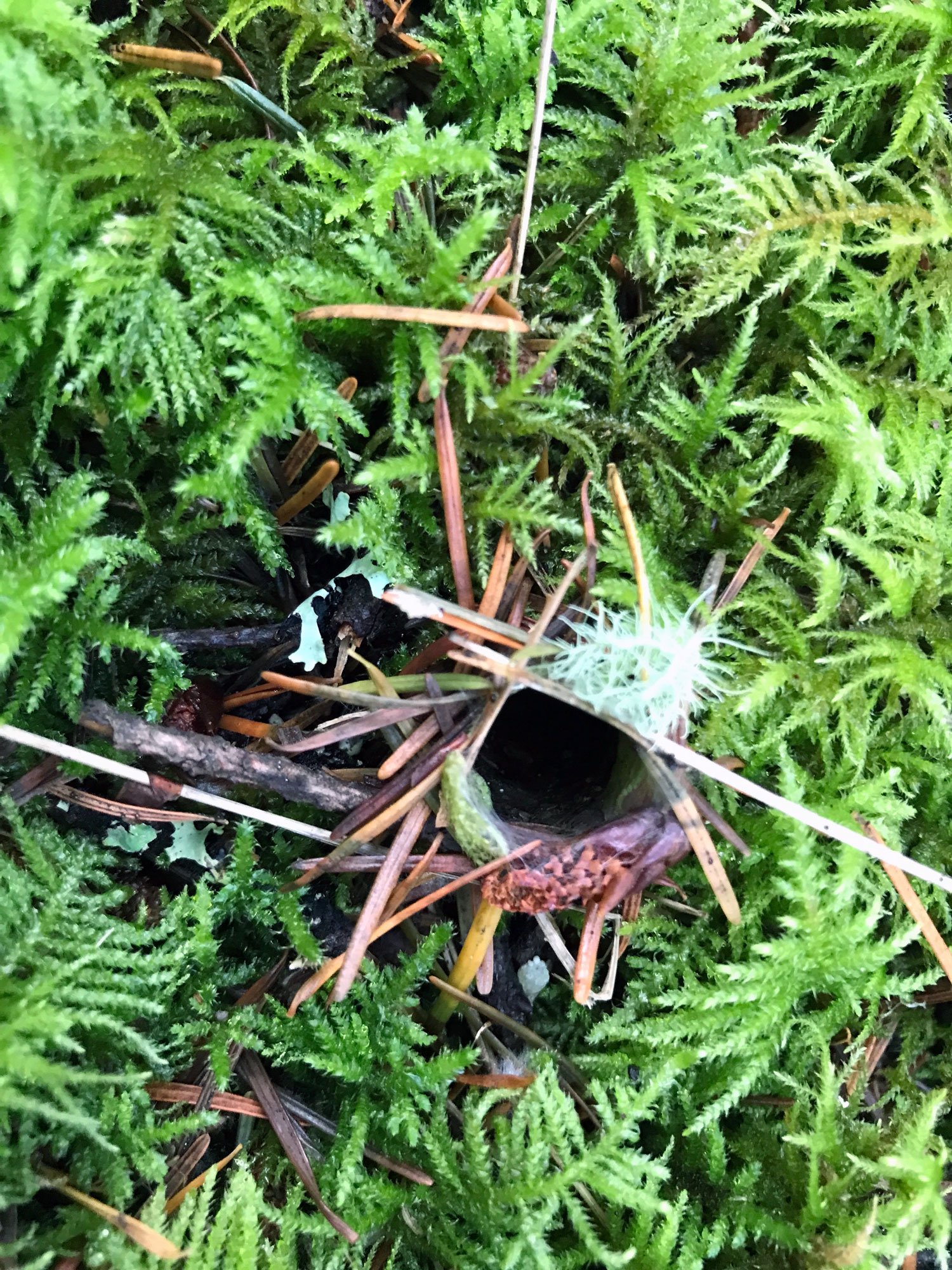Home alone with the California Turret Spider
There’s no place like home to the California Turret Spider (Atypoides riversi) where meals must be delivered to the door since the spider never leaves home. Females are thought to live 16 years, never leaving her burrow. Males only leave the burrow once when they are eight or nine years old to find a female and mate. He leaves his burrow in the fall when the rains start so he doesn’t dry out in his quest. After mating, it’s the end of the line for the male which is why males only live half as long as females.
Turret spiders are found only in California, and only in moist forests. Since they are susceptible to dehydration, they nest in moist spots such as cool north-facing slopes. They make their homes in burrows about six inches underground. Crowning the entrance to their tunnel, they build a one-inch “turret” out of spider silk, and camouflage the outside of the turret in materials found nearby such as pine needles, leaves, moss and lichen. The spider itself is about half an inch to three-quarters of an inch long (13 to 18 millimeters), and the females are larger than the males. Turret spiders are in the same family, mygalomorphs, as tarantulas and trapdoor spiders.
To find these spiders, look for their telltale “turrets”. The turret looks like a dark hole in its surroundings. The easiest place to spot turrets is in high-contrast vivid green mossy banks along trails. You will often see a raised hole surrounded by pine needles. If you find one burrow, look nearby for others. Young spiders don’t go far from home. They build their homes near their mother’s burrow. I’ve often found several burrows 12 to 18 inches apart.
Turret spiders stay in their underground burrows in the daytime and venture to the entrance of their turrets at night to hunt. They have poor eyesight so they use vibrations to feel their prey approaching. Their fangs work like pickaxes to grab their prey.
While these spiders live in a family community of burrows, each spider lives its long life quietly alone. I wonder if they sense each other’s presence? I wonder what happens to the burrows of the males who have left to find a mate? Do they get reused? I wonder how the male knows the female is ready to mate and it’s safe to enter the burrow? What happens if the burrow is flooded or destroyed? How often does that happen in the long life of these spiders?
California Turret Spider burrows on the mossy edges of the Ridge Trail
The Ridge Trail between the Bolema Trail and the Teixeira Trail is a good spot to find turret spider burrows. The trail is in a deep forest with moss growing in vast stretches along the edge of the trail. These nests were all spotted on the same day in November. Another good turret trail is the Greenpicker. The turrets are not easy to spot. You must pay close attention which will slow your hike to a crawl. Once you spot one, it’s hard to stop looking for them! I’ve never had the good fortune to see one of the resident spiders emerge. I even tried touching a couple of turrets gently with a stick to lure one out. No luck. It was daytime and they are nocturnal feeders or maybe they can tell the difference between something edible knocking on their door and an annoying hiker poking their turret?
The turrets below are covered in various materials from the mossy duff including lichen, moss, and fir needles.


